Regardless of whether you are operating a commercial or industrial system, steam boiler maintenance is essential to the life of your system.
Daily Steam Boiler Checks
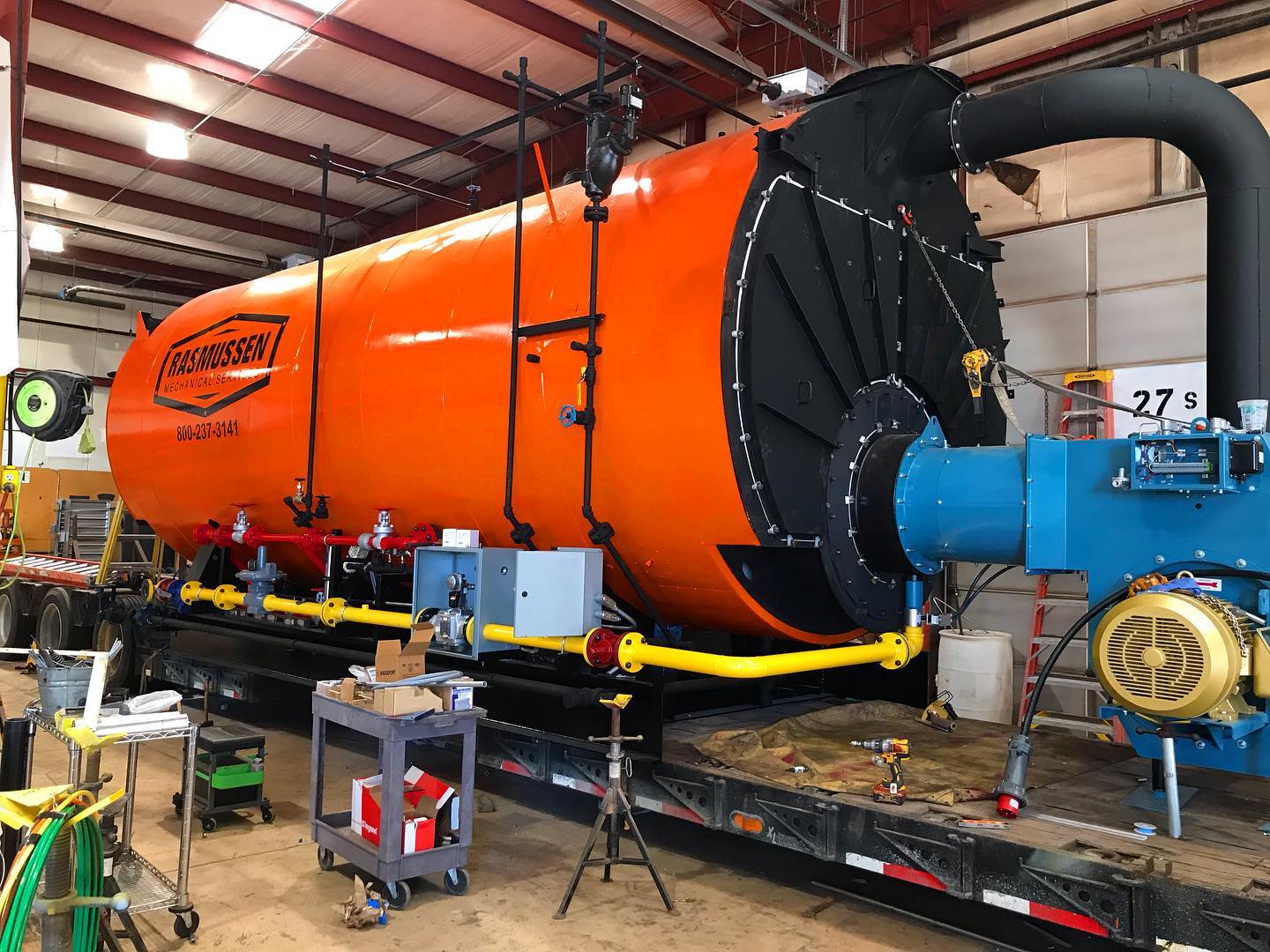
1. Inspect burner refractory cone for any crumbling.
2. Remove sediment buildup by performing bottom blowdown.
3. Check on high limit control and operating control.
4. Shut down burner control switch and watch for response to flame failure.
5. Check low water cut off and auxiliary low water cut off by opening valves on the blowdown valve and ensure burner turns off.
6. Use boiler logs to record pressure gauge and temperature gauge and also check water level glass gauge.
Weekly Steam Boiler Checks
1. Confirm proper operation of low water cut off – blowdown boiler water level. Keep an eye on the gauge glass to make sure the burner kicks off before losing sight of water.
2. Inspect igniter and pilot as well as the state of the flame.
3. Examine gas train valve performance (testing manual shut off valves to make sure they work properly and ad lubrication if needed).
4. Inspect air damper on burner.
5. Examine linkages on burner controls and check on automatic draft controllers. Tighten if needed.
Monthly Steam Boiler Checks
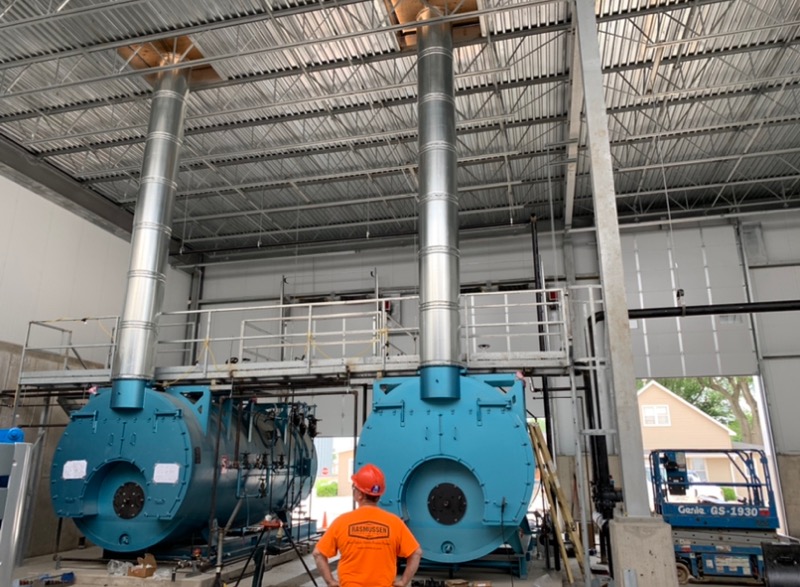
1. Confirm the boiler fresh air inlet screens are clear of debris.
2. Inspect floor drains around boiler and make sure they are working properly.
3. Confirm blowdown separator and cooler are working properly.
4. Inspect blowdown for sludging at bottom of boiler
5. Evaluate flame detections controls. (Ignition electrode should be cleaned if necessary. Make sure it is centered. High tension wire should be checked for decay and flame scanner should also be inspected.)
6. Test out limit controls on the boiler.
7. Lubricate any motors.
Annual Steam Boiler Checks


2. Re certify or replace safety valves.
3. Check pressure settings on gas regulator.
4. Examine boiler for broken or crumbling refractory.
5. Have a hydro test performed on your boiler to look for leaks.
6. Look on the fireside for soot and on the waterside for scale.
6a. Also inspect for any damage or corrosion on piping and clean out the boiler.
7. Have the burner tuned by a professional (We recommend doing this every 4 months)
8. Take apart low water cut off and auxiliary low water cut off. Look for build up and electrical switch problems.
Additional Boiler Room Tips
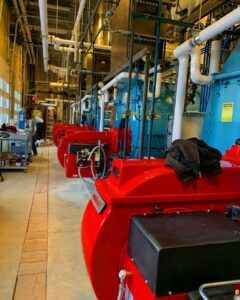
A clean boiler room is the first step to having an effective maintenance program. Next, ensure that all control covers remain in place. This is important because the electrical contacts on these controls can very delicate.
Another common problem we see is caused by facility managers blocking boiler room air supply. Sometimes this is done in the winter because the cold air is causing problems with other mechanical equipment. If this is the case than there should be a duct installed to supply air flow directly to the boiler.
This tip should go without saying, but if your boiler is leaking you should get it fixed. Small leaks can get significantly worse in a short amount of time due to the high pressures at which boilers operate.
Finally, watch for boiler carry over. This is when something other than clean steam leaves the boiler through the header. Often times liquid or contaminants is what gets pulled out of the header. This can create water hammer and also cause boiler water levels to fall.
The Importance Of Boiler Logs
By ensuring you are consistent in maintaining your boiler logs, you will be able to identify trends that can indicate problems. Logs should include recording the following items:
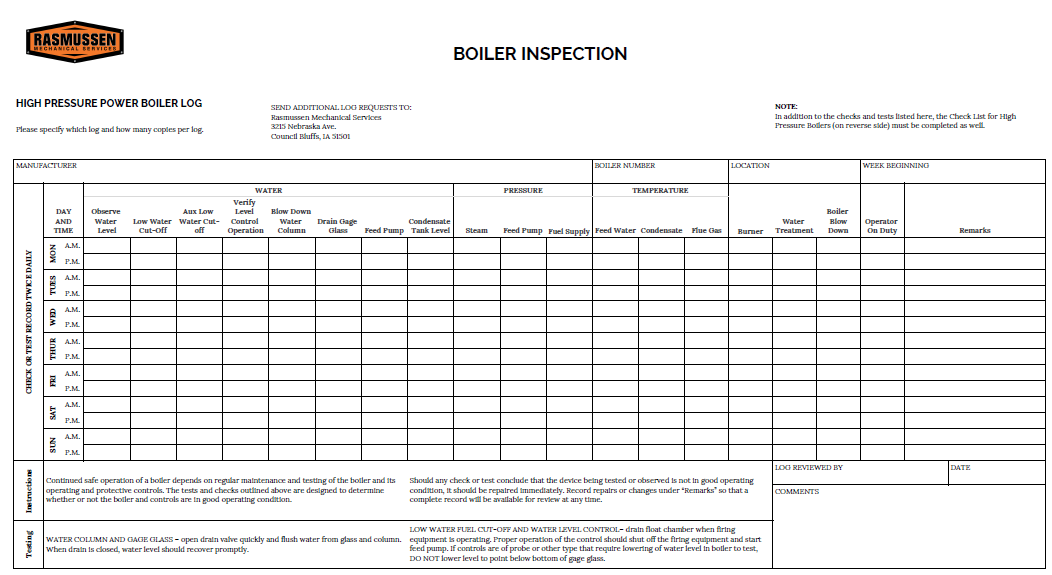

1. Boiler Stack Temperature.
2. Water Temperature.
3. Pressure in the Boiler.
4. Water Level.
5. Operating Time and Cycles.
You should also observe the flame condition, amount of fuel available (when necessary) and the firing level. Be sure to also record this in the boiler logs. This is just for the boiler itself. You should also be recording information on feed pumps, condensate returns, water treatment and any repairs completed. For a full list of what we recommend check out our article on boiler logs here.
Increasing Boiler Efficiency
Steam boiler maintenance is essential, but you also want to ensure you are operating at peak efficiency. Here are a few things you can do to increase efficiency.
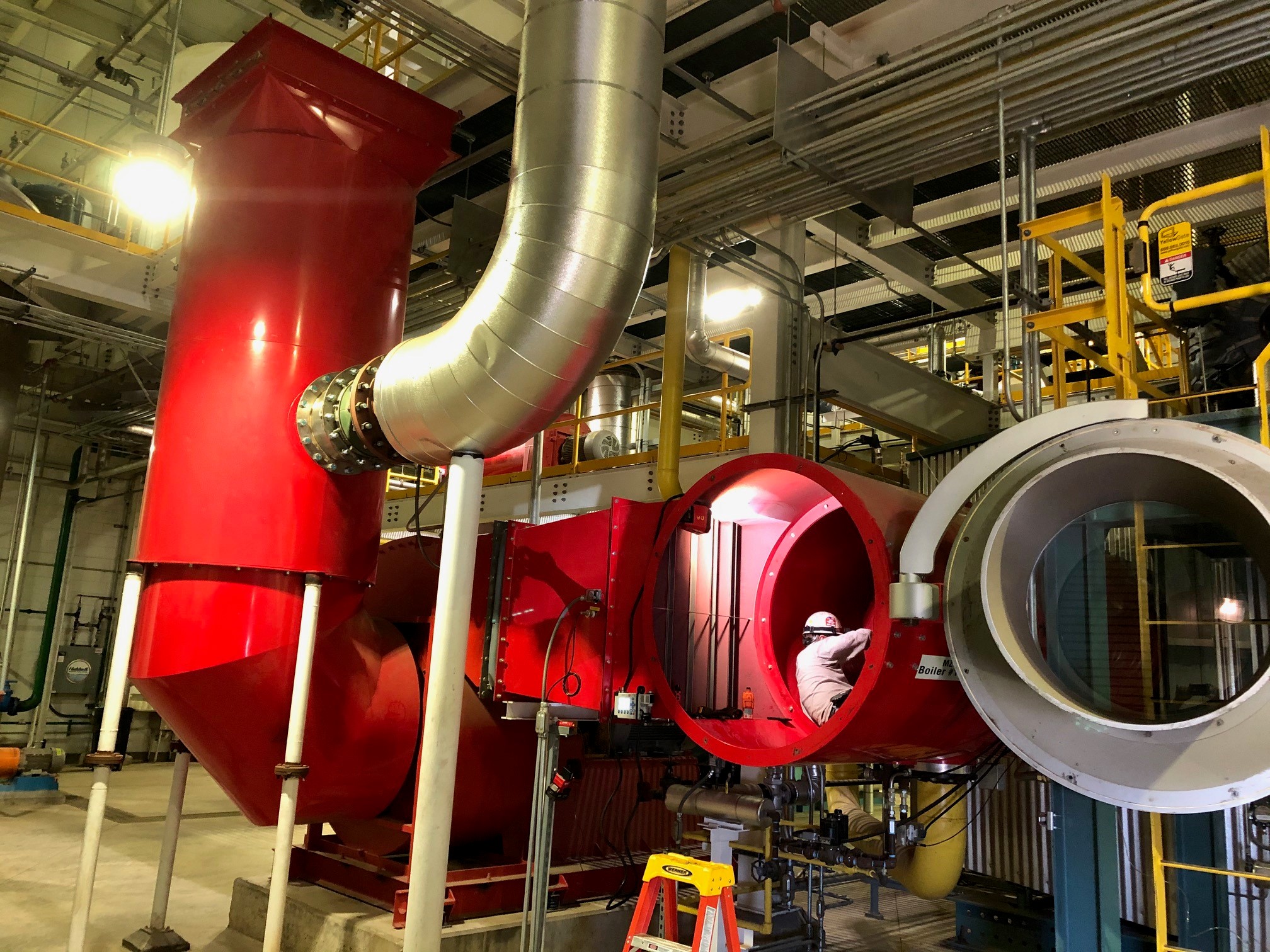

2. Have an economizer installed.
3. Have the burner tuned quarterly by a professional.
4. Make sure valves are insulated.
5. Look into VFDs.
6. Make sure you thoroughly clean the fireside.
7. Make sure you thoroughly clean the waterside
8. When possible, preheat the combustion air.
9. Use a blowdown heat recovery system or flash tank.
10. Have as much condensate return to the boiler as possible.
11. Don’t overdue blowdown.
12. Monitor excess air (tuning regularly will help with this)
13. Eliminate carry over
14. Have a steam trap survey completed.
15. Reduce steam usage whenever possible.
The Steam Boiler Maintenance Experts
For over 50 years Rasmussen Mechanical has been working on commercial and industrial systems across the Midwest. From service to part to installation and design we are happy to help. Schedule an appointment today or call us at 1-800-237-3141.


